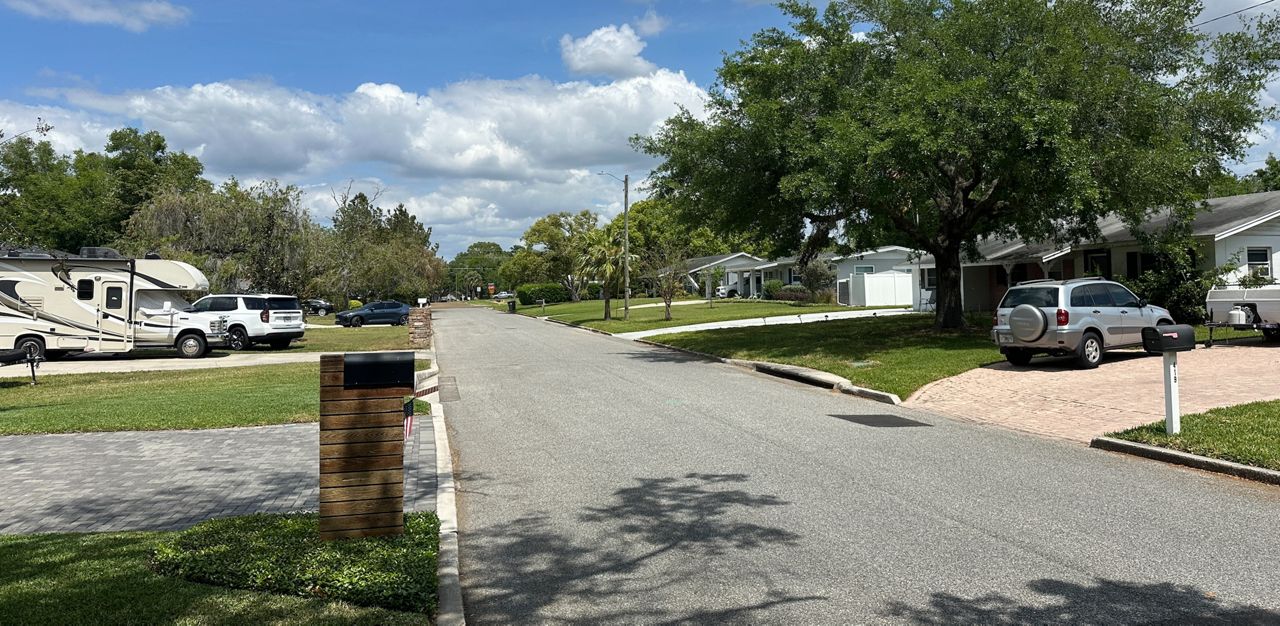ORLANDO, Fla. — According to FEMA, between hurricanes Debby, Helene, and Milton, more than 72,000 national flood insurance claims were filed.
Just a month after Hurricane Helene, FEMA reported more than 54,000 claims had been filed just for that specific storm.
From 2003 through 2023 FEMA reports, 99% of counties in the United States experienced a flood event.
A growing trend is now happening to help people combat the flooding we have seen in recent years. Despite it being a costly one, homeowners are left with a difficult choice for arguably one of their biggest investments.
Movers have been at the home of Earl Wischmeyer for a few days in New Smyrna Beach. He’s not exactly moving in or out, though. He’s moving up.
Not up the street: up four feet.
His home is being elevated to combat flooding he has seen for the past few years.
“We grew up here,” Wischmeyer says, looking at his home. “We are used to having all types of water and wind and stuff like that. It doesn’t bother us.”
An unfortunate trend began to happen in 2022 with hurricanes Ian and Nicole. Wischmeyer’s home would flood. It happened again last year during Hurricane Milton.
Wischmeyer and his wife decided to take matters into their own hands, moving everything they own into a portable garage in the backyard. It’s also been serving as their one-bedroom studio.
“All temporary,” Wischmeyer says while giving a tour of his home inside a newly built garage. “It’s a mezzanine. The storage is upstairs, all of our stuff is on top of us.”
After nearly six months of prepping the home and getting permits, moving day has finally arrived.
Youngblood Building Movers are finally here to move the house with a unified hydraulic jacking machine.
“We are just picking up the walls off the slab,” Randy Youngblood, who owns Youngblood Building Movers with his father, said. “That will give him about four feet of block work there, and then he will get rid of the concrete slab, and then he will put in a new wood floor so he’ll have a crawl space.”
Youngblood is a third-generation home mover. His father, who has been doing it for decades, still controls the jacking machine while his crew gets everything in place.
“We have six jacks going on this one,” Youngblood explained when pointing to Wischmeyer’s home. “You lock them off and soon as they clear and everything is even both side to side, it will get everything and you lock those in and it picks it all up and it’s unified that way.”
The home is estimated to weigh about 40,000 pounds, the steel rods going through the home to lift the house weigh about 20,000 pounds. It takes just seconds for the hydraulic jacking machine to lift 60,000 pounds.
While the house is lifted in seconds, it takes months to plan and facilitate. It is not cheap either. Doing something like this can cost anywhere from about $50,000 to $100,000 and well into the six figures.
It’s also a process, Youngblood said, has become more and more requested following Hurricane Irma in 2017. Due to permitting, the process typically takes about six months to even do something like this.
The Youngbloods can only do about three to four homes a year.
As for Wischmeyer, he’s optimistic his home will be ready before the 2025 storm season.
WATCH THE FULL SPECIAL | Helene & Milton: Path to Recovery
- “A complete gut": An oral history of Hurricane Milton’s fury and flooding in Forest Hills
- One couple, two homes in two different beach towns means double the worry for permitting after storm damage
- Tornado survivor shares her story after Hurricane Milton's historic outbreak
- The Fudge Factory serves up sweets following hurricane rebuild
- Homeowner vulnerable to more hurricane damage as wait for roof fix lingers
- Managing prolonged stress during hurricane recovery
- Local realtors report new trend after back-to-back hurricanes













